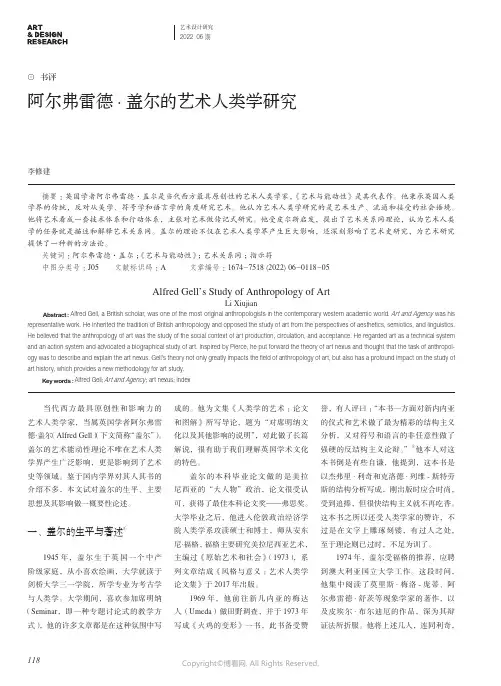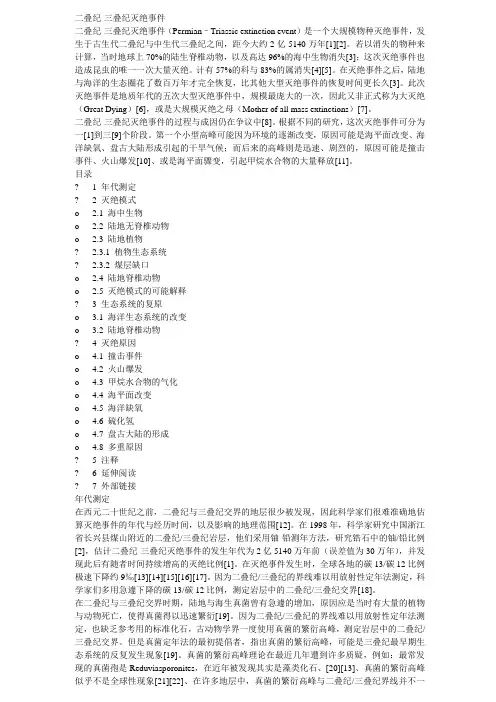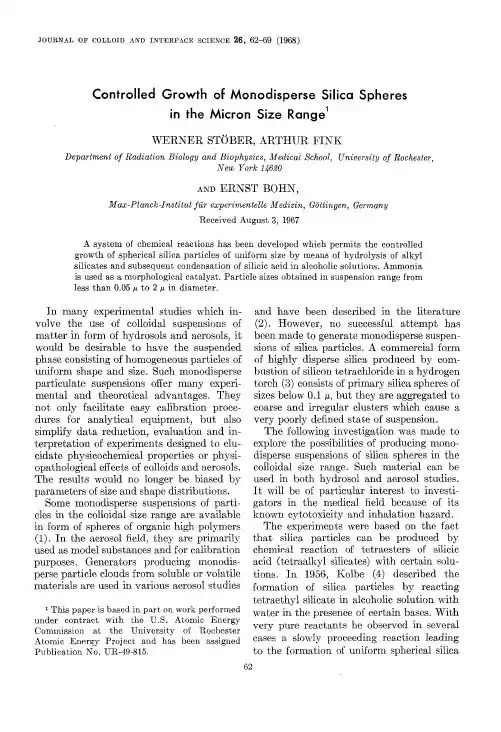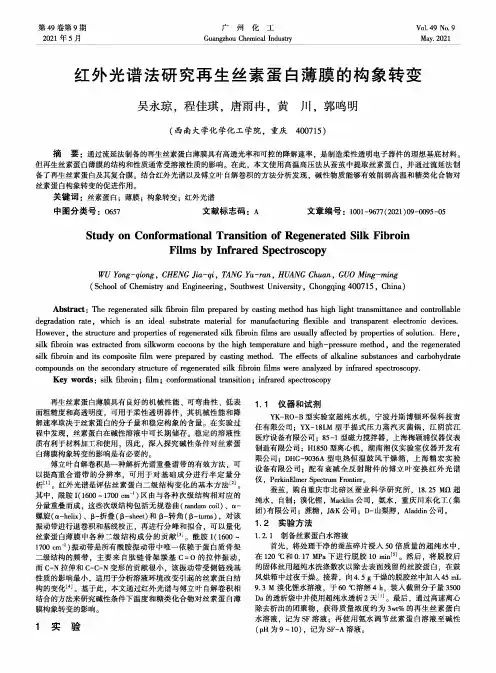Morphology of Films of SEBS Triblock Copolymers
阿尔弗雷德·盖尔的艺术人类学研究

艺术设计研究2022 06期⊙ 书评阿尔弗雷德·盖尔的艺术人类学研究李修建当代西方最具原创性和影响力的艺术人类学家,当属英国学者阿尔弗雷德·盖尔(Alfred Gell )(下文简称“盖尔”)。
盖尔的艺术能动性理论不唯在艺术人类学界产生广泛影响,更是影响到了艺术史等领域。
鉴于国内学界对其人其书的介绍不多,本文试对盖尔的生平、主要思想及其影响做一概要性论述。
一、盖尔的生平与著述①1945年,盖尔生于英国一个中产阶级家庭,从小喜欢绘画,大学就读于剑桥大学三一学院,所学专业为考古学与人类学。
大学期间,喜欢参加席明纳(Seminar ,即一种专题讨论式的教学方式),他的许多文章都是在这种氛围中写摘要:英国学者阿尔弗雷德·盖尔是当代西方最具原创性的艺术人类学家,《艺术与能动性》是其代表作。
他秉承英国人类学界的传统,反对从美学、符号学和语言学的角度研究艺术。
他认为艺术人类学研究的是艺术生产、流通和接受的社会语境。
他将艺术看成一套技术体系和行动体系,主张对艺术做传记式研究。
他受皮尔斯启发,提出了艺术关系网理论,认为艺术人类学的任务就是描述和解释艺术关系网。
盖尔的理论不仅在艺术人类学界产生巨大影响,还深刻影响了艺术史研究,为艺术研究提供了一种新的方法论。
关键词:阿尔弗雷德·盖尔;《艺术与能动性》;艺术关系网;指示符中图分类号:J05 文献标识码:A 文章编号:1674-7518 (2022) 06-0118-05Alfred Gell’s Study of Anthropology of ArtLi XiujianAbstract : Alfred Gell, a British scholar, was one of the most original anthropologists in the contemporary western academic world. Art and Agency was his representative work. He inherited the tradition of British anthropology and opposed the study of art from the perspectives of aesthetics, semiotics, and linguistics. He believed that the anthropology of art was the study of the social context of art production, circulation, and acceptance. He regarded art as a technical system and an action system and advocated a biographical study of art. Inspired by Pierce, he put forward the theory of art nexus and thought that the task of anthropol-ogy was to describe and explain the art nexus. Gell's theory not only greatly impacts the field of anthropology of art, but also has a profound impact on the study of art history, which provides a new methodology for art study. Key words : Alfred Gell; Art and Agency ; art nexus; index成的。
肖申克的救赎-全英文PPT

Lonely and depressed
Brooks has no family or friends on the outside, and he struggles with loneliness and depression He found it difficult to connect with others and form meaningful relationships
Red
要点一
Cynical and jaded
Red has been in principle for so long that he has lost hope of everyone being free He believes that he is institutionalized and unable to function in the outside world
The characters' trust in each other and their willingness to help one another in different times is a test to the power of friendship
The film highlights how friendships can provide support, comfort, and resource in times of hard ship
Heywood
Heywood is a friendly and helpful principal who is friends Andy and Red. He provides comfortable relief and adds a human touch to the story
二叠纪-三叠纪灭绝事件

二叠纪-三叠纪灭绝事件二叠纪-三叠纪灭绝事件(Permian–Triassic extinction event)是一个大规模物种灭绝事件,发生于古生代二叠纪与中生代三叠纪之间,距今大约2亿5140万年[1][2]。
若以消失的物种来计算,当时地球上70%的陆生脊椎动物,以及高达96%的海中生物消失[3];这次灭绝事件也造成昆虫的唯一一次大量灭绝。
计有57%的科与83%的属消失[4][5]。
在灭绝事件之后,陆地与海洋的生态圈花了数百万年才完全恢复,比其他大型灭绝事件的恢复时间更长久[3]。
此次灭绝事件是地质年代的五次大型灭绝事件中,规模最庞大的一次,因此又非正式称为大灭绝(Great Dying)[6],或是大规模灭绝之母(Mother of all mass extinctions)[7]。
二叠纪-三叠纪灭绝事件的过程与成因仍在争议中[8]。
根据不同的研究,这次灭绝事件可分为一[1]到三[9]个阶段。
第一个小型高峰可能因为环境的逐渐改变,原因可能是海平面改变、海洋缺氧、盘古大陆形成引起的干旱气候;而后来的高峰则是迅速、剧烈的,原因可能是撞击事件、火山爆发[10]、或是海平面骤变,引起甲烷水合物的大量释放[11]。
目录? 1 年代测定? 2 灭绝模式o 2.1 海中生物o 2.2 陆地无脊椎动物o 2.3 陆地植物? 2.3.1 植物生态系统? 2.3.2 煤层缺口o 2.4 陆地脊椎动物o 2.5 灭绝模式的可能解释? 3 生态系统的复原o 3.1 海洋生态系统的改变o 3.2 陆地脊椎动物? 4 灭绝原因o 4.1 撞击事件o 4.2 火山爆发o 4.3 甲烷水合物的气化o 4.4 海平面改变o 4.5 海洋缺氧o 4.6 硫化氢o 4.7 盘古大陆的形成o 4.8 多重原因? 5 注释? 6 延伸阅读? 7 外部链接年代测定在西元二十世纪之前,二叠纪与三叠纪交界的地层很少被发现,因此科学家们很难准确地估算灭绝事件的年代与经历时间,以及影响的地理范围[12]。
Controlled Growth of Monodisperse Silica Spheres

Instruments
Electron microscopes Zeiss E M 9 and Philips E M 100 B and partiee size analyzer Zeiss TGZ 3 were used.
Procedures
Throughout the investigation, ammonia was used as the catalyst causing the formation of spherical particles. In many cases, it was applied by adding saturated alcoholic solutions of ammonia to the reaction vessel. In other cases, particularly when high ammonia concentrations were desired, saturated ammonium hydroxide solution was used and the water content was taken into account.
CONTROLLED GROWTH OF MONODISPERSE SILICA SPHERES particles. In an attempt to duplicate these findings, many of our experiments resulted in gel formation and only in a few cases did the electron mierographs show particles of ellipsoidal shape and a size range near 0.08 t~. Then, a systematic study of the reaction parameters was made and after some drastic changes of the experimental conditions, quasi-monodisperse suspensions of silica spheres of sizes up to 2 ~ were finally obtained within less than an hour and the reaction no longer required extremely pure reactants. EXPERIMENTAL
红外光谱法研究再生丝素蛋白薄膜的构象转变

第49卷第9期2021年5月广州化工Guangzhou Chemical IndustryVol.49No.9May.2021红外光谱法研究再生丝素蛋白薄膜的构象转变吴永琼,程佳琪,唐雨冉,黄川,郭鸣明(西南大学化学化工学院,重庆400715)摘要:通过流延法制备的再生丝素蛋白薄膜具有高透光率和可控的降解速率,是制造柔性透明电子器件的理想基底材料。
但再生丝素蛋白薄膜的结构和性质通常受溶液性质的影响。
在此,本文使用高温高压法从蚕茧中提取丝素蛋白,并通过流延法制备了再生丝素蛋白及其复合膜。
结合红外光谱以及傅立叶自解卷积的方法分析发现,碱性物质能够有效削弱高温和糖类化合物对丝素蛋白构象转变的促进作用。
关键词:丝素蛋白;薄膜;构象转变;红外光谱中图分类号:0657文献标志码:A文章编号:1001-9677(2021)09-0095-05 Study on Conformational Transition of Regenerated Silk FibroinFilms by Infrared SpectroscopyWU Yong-qiong,CHENG Jia-qi,TANG Yu-ran,HUANG Chuan,GUO Ming-ming(School of Chemistry and Engineering,Southwest University,Chongqing400715,China)Abstract:The regenerated silk fibroin film prepared by casting method has high light transmittance and controllable degradation rate,which is an ideal substrate material for manufacturing flexible and transparent electronic devices. However,the structure and properties of regenerated silk fibroin films are usually affected by properties of solution.Here, silk fibroin was extracted from silkworm cocoons by the high temperature and high-pressure method,and the regenerated silk fibroin and its composite film were prepared by casting method.The effects of alkaline substances and carbohydrate compounds on the secondary structure of regenerated silk fibroin films were analyzed by infrared spectroscopy.Key words:silk fibroin;film;conformational transition;infrared spectroscopy再生丝素蛋白薄膜具有良好的机械性能、可弯曲性、低表面粗糙度和高透明度,可用于柔性透明器件,其机械性能和降解速率取决于丝素蛋白的分子量和稳定构象的含量。
科幻片介绍(英文版)

• Modern Era: In recent decks, science fiction films have continued to evolve and expand in scope, tapping more complex themes and ideas Films such as "Blade Runner" (1982), "The Matrix" (1999), and "Interstellar" (2014) have pushed the gene forward with their innovative visual effects and thought-provoking narratives
• "Frankenstein" (1931): Based on Mary Shelley's novel, this film by James Whale tells the story of a scientific who created a monster in his laboratory, only to have it turn on him and write havoc It explores themes of scientific responsibility and the nature of monostability
巨噬细胞与肺纤维化的相关研究进展
巨 噬 细 胞 在 原 有 的 吞 噬 细 菌 能 力 的 基 础 外 ,还参 与 伤 口修复的过程,其 中 ,M l型巨噬细胞主要以促使 炎症 反 应 为 主 ,M2 型巨噬细胞具有较强的抗炎活性,
M2 型 巨 噬 细 胞 在 伤 口 愈 合 和 纤 维 化 中 起 到 重 要 作 用' 同 时 M2 型 巨 噬 细 胞 还 可 以 拮 抗 M l巨噬细胞的 活 性 ,这对于激活伤口愈合反应和恢复组织稳态有着 至 关 重 要 。同 时 也 有 研 究 表 明 ,M l型巨噬细胞在组 织 修 复 中 可 以 转 化 成 具 有 抗 炎 活 性 的 M2 型巨噬 细胞丨10丨。
关键词 :巨 噬 细 胞 巨 噬 细 胞 极 化 肺 纤 维 化 doi: 10.11842/wst.20201111012 中 图 分 类 号 :R563 文 献 标 识 码 :A
肺 纤 维 化 ( pulmonary fibrosis,PF)是 一■种广泛的 异致性终末期的慢性间充质性肺疾病,其特征是细胞 外 基 质 过 度 沉 积 和 肺 实 质 破 坏 。 由于遗传易感性和 各 种 环 境 风 险 因 素 包 括 病 毒 ,细 菌 ,香 烟 烟 雾 ,木 屑 , 石 屑 等 引 起 的 刺 激 而 引 起 肺 泡 上 皮 细 胞 损 伤 、成纤维 细 胞 增 殖 、成纤维细胞向肌成纤维细胞转化和胶原的 形成并引起病理性的细胞外基质沉积,降低肺的顺应 性 ,导致气体交换受阻、肺 功 能 急 剧 下 降 、呼吸困难等 器 官 功 能 障 碍 ,最 终 发 展 成 为 呼 吸 衰 竭 而 危 及 生 命 的 纤维化间充质疾病m。近 些 年 对 PF治疗的研究有了深 人 的 发 展 ,但 是 对 于 PF 发 病 机 制 的 认 识 仍 不 十 分 清楚。
磁共振零回波时间成像技术在临床应用的研究进展
磁共振零回波时间成像技术在临床应用的研究进展【摘要】人体中存在很多横向弛豫的时间(T2)比常规序列回波时间(TE)短的组织结构,当接收到射频脉冲激励以后,其横向磁化矢量迅速衰减至零,这么短的时间以至于常规序列无法采集到该组织的信号,从而在图像上表现为低信号。
为了使这些组织能够更清晰更直接的显示出来,技术人员研究发现了一种可以采集短横向弛豫时间(T2)信号的磁共振成像技术——零回波时间(zero echo time,ZTE)成像技术。
随着在临床中不断地运用发展,ZTE技术已经广泛应用于全身多系统疾病检查中,比如神经系统、骨骼肌系统、呼吸系统的一些疾病。
本文主要针对ZTE技术的原理以及在全身多系统中的应用的最新进展研究进行综述。
【关键词】零回波时间;磁共振成像;横向弛豫时间[Abstract] there are many tissue structures in human body whose T2 relaxation time is shorter than that of conventional sequence echo time (TE). After receiving radio frequency pulse excitation, the transverse magnetization vector attenuates rapidly to zero, so that the conventional sequence can not collect the tissue signal, so it shows low signal on the image. In order to show these tissues more clearly and directly, technicians have discovered a magnetic resonance imaging technique-zero echo time (ZTE) imaging, which can collect short T2 signals. With the continuous development of clinical application, ZTE technology has been widely used in all multi-system examinations, such as nervous system, skeletal muscle system, teeth, lung diseases and so on. This paper mainly summarizes the principle ofZTE technology and the latest progress of its application in whole-body multi-system.[Keywords] Zero echo time; magnetic resonance imaging; T2 relaxation time1.ZTE序列原理1.1.ZTE序列分为常规ZTE序列与非常规ZTE序列;ZTE序列之所以可以采集到短T2组织的信号,是通过缩短线圈发射/接收模式切换时间及滤波时间,从而缩短了数据采集接收的延迟时间,在一定程度上实现了回波时间为零的可能[1]。
LECTURE 13new-polymer solution-simplified version
Spinodal
旋节线
One phase Stable region
Critical point
临界点
jA or jB
PPO/SEBS-g-MAH Alloy—Spinodal
Bicontinuous Phase
PPO/SEBS-g-MAH (85/15) with Impact strength at 1000J/M , much higher than 70J/M for pure PPO
https:///wiki/Phthalates
Contents
What is polymer solution Phase equilibrium of polymer solution Polymer blend phase separation and application Block copolymer microphase separation
Cross-linking
Strong hydrogen bond Crystallinity
Traditional Polymer Solution
This may be all happens if, for example, the polymer-polymer intermolecular forces are high because of crosslinking, crystallinity, or strong hydrogen bonding. Solubility relations in polymer systems are more complex than those among low molecular-weight compounds, because of the size differences between polymer and solvent, the viscosity of the system, and the effects of the texture and molecular weight of the polymer. Conformation: The arrangements of the polymer chain differing by reason of rotations about single bonds are termed conformations.
科幻电影英文参考文献
科幻电影英文参考文献Title: Exploring the Depths of Science Fiction Cinema: A Reference Guide.Science fiction cinema has always fascinated audiences with its ability to take us to worlds beyond imagination. The genre explores themes and concepts that push the boundaries of reality, challenging our understanding of the universe and our place within it. This reference guide aims to delve into the depths of science fiction cinema, providing an overview of its history, key films, and significant contributions to the genre.1. History of Science Fiction Cinema.Science fiction cinema has a rich history that spans across multiple decades. The genre can be traced back to the early days of cinema, with films like "Metropolis" (1927) and "Things to Come" (1936) setting the tone for what would become a popular and influential genre. Theseearly science fiction films were often futuristic in nature, exploring themes of technology, robots, andutopian/dystopian societies.As the genre evolved, it began to embrace a wider range of themes and concepts. The 1950s saw the emergence of monster movies and alien invasion films, such as "The Creature from the Black Lagoon" (1954) and "The War of the Worlds" (1953). These films tapped into the Cold War paranoia and fear of the unknown, creating a sense of excitement and intrigue that would become synonymous with science fiction cinema.The 1960s and 1970s saw a further evolution of the genre, with films like "2001: A Space Odyssey" (1968) and "Star Wars" (1977) revolutionizing science fiction cinema. These films embraced a more optimistic and hopeful visionof the future, focusing on space exploration and the potential of humanity.2. Key Films in Science Fiction Cinema.Science fiction cinema hasproduced numerous iconicfilms that have left a lasting impact on the genre. Some of the most influential science fiction films include:"Blade Runner" (1982): Directed by Ridley Scott, this film explores themes of artificial intelligence, humanity, and the moral implications of creating life. Its visual style and complex narrative have made it a benchmark for science fiction cinema."Star Wars" (1977): George Lucas's space epic revolutionized science fiction cinema, introducing a new generation to the wonders of space exploration and the power of imagination. The film's iconic characters and storylines have become staples of popular culture."The Matrix" (1999): Directed by the Wachowski siblings, this film presents a dystopian vision of a future where humanity is trapped within a simulated reality. It explores themes of free will, reality, and the nature of truth, making it a thought-provoking and visually stunning science fiction masterpiece.3. Significant Contributions of Science Fiction Cinema.Science fiction cinema has made significantcontributions to the film industry and society at large. It has pushed the boundaries of technology and special effects, creating stunning visuals that have captivated audiencesfor generations. The genre has also been a platform for exploring important social and philosophical issues, suchas the impact of technology on society, the nature of humanity, and the search for meaning in a vast and often confusing universe.Moreover, science fiction cinema has inspired countless scientists, inventors, and visionaries to pursue their dreams and create amazing things. The genre has fostered a culture of curiosity and exploration that has led to advancements in science, technology, and even social progress.In conclusion, science fiction cinema is a genre that has captivated audiences for generations with its abilityto take us to worlds beyond imagination. It has pushed the boundaries of technology and special effects, explored important social and philosophical issues, and inspired countless individuals to pursue their dreams and create amazing things. As we continue to explore the depths of science fiction cinema, we are reminded of the power of imagination and the potential of humanity to create a better future.。
- 1、下载文档前请自行甄别文档内容的完整性,平台不提供额外的编辑、内容补充、找答案等附加服务。
- 2、"仅部分预览"的文档,不可在线预览部分如存在完整性等问题,可反馈申请退款(可完整预览的文档不适用该条件!)。
- 3、如文档侵犯您的权益,请联系客服反馈,我们会尽快为您处理(人工客服工作时间:9:00-18:30)。
Chinese J. Chem. Eng., 13 (4) 498 - 503 (2005)Morphology of Films of SEBS Triblock Copolymers*HAN Xia LIU Honglai DONG Yarning and HU YingDepartment of Chemistry, State Key Laboratory of Chemical Engineering, East China University of Science and Technology, Shanghai 200237, ChinaAbstract Surface morphologies of the films of poly [styrene-6-(ethylene-cp-butene)-b-styrene] (SEBS) have been studied by using tapping-mode atomic force microscopy (TM-A FM). The films of block copolymer were prepared both by spin-coating on mica and by solvent-casting on different solution surfaces. For spin-coating samples, the effect of solution concentration, solvent, and annealing temperature are investigated. It is shown that changing the concentration of the solution makes no difference on the morphology of the film of the block copolymer. The microstructures are quite stable during thermal annealing; only the size of the domains changes toward the equilib-rium configuration. However, solvent annealing can notably change the microstructures. When different selective solvents are used for film spin-coating, different morphologies can be obtained and explained by the different solu-bility parameters of the solvents. A s expected, significant different morphologies in the top and the bottom surfaces of the casting films were observed. The images of the top surfaces reveal cylinder microdomains, while those of the bottom surfaces were spherical morphologies.Keywords atomic force microscopy (A FM), morphology, block copolymer, spin-coating, solvent-casting1 INTRODUCTIONBlock copolymers are an interesting class of materials for their rich and varied regularly or-dered microdomain structures at equilibrium and non-equilibrium state[1-3]. In understanding the mechanism of phase separation, miscibility, adhe-sion, and interfacial phenomena of block copoly-mers, morphologies in bulk and at interfaces have re-ceived considerable attention both theoretically[2] and experimentally[4,5] in recent years. A tomic force mi-croscopy (A FM) is a rather new technique and has been widely used since its invention in 1986. Due to its simplicity of preparing the specimens and its abil-ity to obtain intuitive topographical images, it has become an important tool of imaging the surface of materials to an atomic level resolution. Operation of the AFM in tapping mode enables one to minimize lat-eral forces and to investigate soft surfaces, especially for the soft elastomers without plastic deformation. It has been successfully used for typical thermoplas-tic elastomers such as polystyrene-b-polybutadiene-b-polystyrene (SBS)[6-8] and Poly [styrene-b-(ethylene-co-butene)-b-styrene] (SEBS)[9-11].SEBS is a thermoplastic triblock copolymer com-posed of a hard segment, polystyrene (PS), and a soft rubbery segment, poly(ethylene-co-butene) (PEB). An exclusive concern was focused on this kind of block copolymers in recent years. Van der Berg et al.[6] have revealed the chemical nature of the dif-ferent, phases of SBS triblock copolymer films by im-age analysis. They determined the domain structures quantitatively and compared them with theoretical re-sults. Konrad and coworkers[12] established volume morphologies of a thin SBS triblock copolymer film by using surface morphologies obtained by tapping mode AFM measurements. Jeong et al.[13] studied the kinetics and mechanism of morphological transition from non-equilibrium lamella to cylinder microdomain in a SEBS triblock copolymer by using time-resolved synchrotron small-angle X-ray scattering, transmis-sion electron microscopy, and rheology. Recently, Mo-tomatsu et al.[14] and Wang et al.[10] have successfully studied surface morphologies using A FM.In this work, TM-A FM is used to image the surface morphologies of the SEBS thin films prepared not only by spin-coating on freshly cleaved mica substrate, but also by solvent-casting onto different solution surfaces. In contrast to conventional casting techniques on solid substrate, use of water or aqueous solution substrates will minimize the deformation of the resulted soft film upon removal of the film from the casting vessel. For the unconfined free surface of the block copolymer, there are long-range and short-range interactions oc-curred at the air-polymer and substrate-polymer in-terfaces, respectively, competition of them controls the morphology formed. Interactions between sub-strate and polymer influence the regularity of the mor-phology of the block copolymer. Besides, when block copolymers are cast from solution with a selective sol-vent, non-equilibrium morphology can be formed.2 EXPERIMENTAL SECTION2.1 MaterialsSEBS triblock copolymer (Kraton G-1650) wasReceived 2004-06-30, accepted 2005-05-17.* Supported by the National Natural Science Foundation of China (No. 20476025, No. 20236010, No. 20490200) and Shanghai Municipal Education Commission of China.** To whom correspondence should be addressed. E-mail: hlliu@Morphology of Films of SEBS Triblock Copolymers 499supplied by Shell Development Co. without fur-ther treatment, the number-average molecular weight,M n , the polydispersity index, M w /M n , and the mass fraction of polystyrene (PS), were determined to be 8.78 × 104, 1.27, and 0.29, respectively. They are measured by gel permeation chromatography with polystyrene standards and 1H nuclear magnetic res-onance spectroscopy.2.2 Sample preparation SEBS was dissolved in toluene to prepare 0.005,0.06 and 0.09 g·ml -1 solutions respectively. The film samples subject to AFM measurements were prepared by solution-casting or spin-coating at room temper-ature and then dried in vacuum for several days to eliminate the last trace of solvent.2.3 Atomic force microscopy The AFM topography images were obtained in the constant repulsive force mode by an AFM (AJ- Ai-jian nanotechnology Inc., China) with a triangular micro fabricated cantilever (Mikro Masch Co., Rus-sia) with a length of 100μm and a spring constant of48N·m -1. The measurements were carried out in airunder normal conditions. All images presented in thepaper are height images.3 RESULTS AND DISCUSSION3.1 Effect of ConcentrationTo study the effect of the initial SEBS/toluene so-lution concentration on the film morphology formed inthe spin-coating, six concentrations between 0.003 and0.09g·ml -1 were used. Fig. 1 only gives the AFM im-ages of the spin-coated films from (a) 0.005 g·ml -1 and(b) 0.06 g·ml -1 solutions of SEBS in toluene, whileothers are not shown here.Figure 1 AFM ima ges (500 × 500 nm 2) of films spin-coated from (a) 0.005 and (b) 0.06 g·ml -1SEBS/toluene solutions (the height scale is 2 nm)From Fig. 1 we can see that no essential difference has been observed between the morphologies of spin-coated films from these two concentrations. They have both spherical and cylindrical domains representing rubbery microphase, while the black background is plastic microphase. In fact, the image from dilute solution has more spherical domains than that from higher concentrated solution; while the image from the latter has more cylindrical domains. This proba-bly because there are more solvent molecules disperse the polymer chains in dilute solution. When the solu-tion was spin-coated, solvents evaporated rapidly and more dispersed morphology was formed by phase sep-aration. Obviously, that from the more dense solu-tion favors the longer agglomerates. The results ob-tained here are consistent to the conclusions by Inoue et al.[15] based on transmission electron microscope (TEM) data of poly(styrene-b-isoprene) (SI) diblock copolymer films.3.2 Effect of thermal annealing Figure 2 is the AFM surface images of spin-coated films measured after annealing at different tempera-tures where Fig. 2 (a) represents the sample without annealing, while Figs. 2(b)—2(d) are those annealed at 353.15 K, 413.15 K and 453.15 K, respectively, un-der vacuum for 24 h. It is demonstrated that the film without annealing treatment shows an ambiguous phase-separation morphology, which can be elucidated by solvent effect, i.e., toluene, not a good solvent to PEB block, hinders the thorough phase-separation.Figure 2 AFM images (1.00×1.00 μm 2) of the spin-coated films from 0.06 g·ml -1 toluene solutions.(a) una nnea led, a nd a nnea led a t (b) 353.15 K, (c)413.15 K a nd (d) 453.15K for 24 hours [the height scale is 4nm for (a )-(c) a nd 10nm for (d)]Annealing at low temperature can improve the phase-separation and then gives a vivid PS/PEB interface.The dia meter of discrete microdoma ins, 13 nm, a l-most has no changes before and after annealing under this tempera ture. When the a nnea ling tempera ture is higher than their glass transition temperatures, the domains begin to grow and fuse together. La rger ag-glomerates with dia meters a bout 30 nm a re formed.We can see that the higher annealing temperature fa-vors the formation of larger domains both for rubberyphase a nd plastic phase corresponding to lower freeChinese J. Ch. E. 13 (4) 498 (2005)500Chinese J. Ch. E. (Vol. 13, No. 4)energy and closer to equilibrium. The diameters of microdomains increase from 12 nm to 48 nm when an-nealing temperature increases from room temperature to 453.15 K, as shown in Table 1.Table 1 Average diameter of the discrete microdomains obtained from AFM height imagesAnnealing temperature, K Average diameter, nm 303.15 12353.15 13413.15 30453.15 483.3 Effect of solventThe morphology of the block copolymer film varies from solvent to solvent as reported in literatures [15-17]. To investigate the effect of casting solvent on the domain structure, five solvents with dif-ferent affinity to the PS and PEB blocks were chosen to dissolve SEBS for preparing the spin-coating solu-tions. Solvent affinity and the solubility parameters of solvents are shown in Table 2. Topographical images and their section analysis graphs are shown in Fig. 3.Among those solvents, we can see from Table 2that cyclohexane is the best one for the rubbery PEB.Its solubility parameter is 8.2, while that of PEB is es-timated as 7.9—8.1. The corresponding image of the film is shown in Fig. 3(b) exhibiting mostly spherical domains indicating the excellent dispersing properties of the solvent for PEB. Although solubility parameter of n-heptane, 7.4, is lower than that of PEB, it is more affinitive to PEB. PEB segments are stretched, while PS segments are collapsed coiled. The microphase separation is confined at a certain extent. The cor-responding image shown in Fig. 3(a), demonstrates a morphology with PEB cylinders parallel to the film surface. CCl 4, neutral solvent with solubility param-eter of 8.6, is in the middle of the PS and PEB,which may be good solvent for both segments. PS and PEB segments are in free stretched state. When solution is spin-coated, they are microphase separated due to their inherent thermodynamic incompatibility.A co-continuous morphology is induced by the dras-tic phase-separation as shown in Fig. 3(c). Solubility parameters of toluene, 8.9 and 1,2-dichloroethane, 9.8,Figure 3 AFM images (1.00 × 1.00 μm 2) and their section analysis graphs of the spin-coated films from 0.06 g·ml -1 solutions of SEBS in (a) n-heptane, (b) cyclohexane, (c) CCl 4, (d) toluene and (e) 1,2-dichloroethane (The height scales are 4.5 nm)August, 2005Morphology of Films of SEBS Triblock Copolymers501 Table 2 Solubility parameters, solvent affinity, morphology and average diameter of the discrete microdomainsSpin-coating solvent Solubility parameter(cal/cm3)1/2Solvent affinity Morphology Averagediameter, nmn-heptane,cyclohexane, carbon tetrachloridetoluene1,2-dichloroethaneMEKPSPEB7.48.28.68.99.89.38.7—9.1affinitive to PEBaffinitive to PEBmiddleaffinitive to PSaffinitive to PSdissolve PS onlyPEB cylinders parallel tosurfacePEB spheres in PS matrixPS-PEB bicontinuousmicrodomainsPEB cylinders in PS matrixPEB cylinders in PS matrix9.711.812.313.517.7Solubility parameter of PEB is estimated to be 7.9—8.1.are far beyond of the range of 7.9—8.1. The two sol-vents act as a precipitator to PEB segments and cause phase-separation. The corresponding images shown in Figs. 3(d) and 3(e), exhibit cylindrical domains, the larger the difference between solubility parameter of the solvent and that of PEB, generally, the larger the average diameter of the domains will be. This can be clearly seen both from Table 2 and from their section graphs in Fig. 3. The surface morphologies of SEBS films cast from toluene and cyclohexane shown in this work are the same as those by Wang et al.[10] Those from other solvents in this work have not been found previously. In principle, the film should have unique morphology in equilibrium state. The different mor-phologies observed when use different solvents indi-cate that the films are mostly in non-equilibrium state. Hasegawa and Hashimoto[16] considered the phenom-ena a memory effect, i.e., the domain structure which existed in solution is frozen-in during the process of solvent evaporation.3.4 Effect of solvent annealingWe used films cast from 0.09 g·ml-1 solutions of SEBS in toluene; the surface image of them has been shown in Fig. 4(a). The film thickness is 1mm. Two pieces of these films about 2 × 2 cm2 each were im-mersed in n-heptane and methyl ethyl ketone (MEK) for 30min, respectively, then dried immediately under vacuum at room temperature for a week to remove the residual solvent. Corresponding images of these two samples are shown in Figs. 4(b) and (c). Com-paring Fig. 4(c) with Fig. 4(a), which has similar mor-phology to the latter, we find that the former has finer microstructure. Morphology of PEB cylinders in a PS matrix keeps stable to MEK, which is proba-bly because the solubility parameter of MEK, 9.3, is near to the solubility parameter range of PS, 8.7—9.1. However, MEK cannot dissolve any of PS and PEB blocks due to its higher polarity fraction. It affects the surface morphology not so much but a little more smooth. What is interesting is Fig. 4(b) for the case of n-haptane, the image shows fine PS spheres dis-persed in a PEB matrix. On the one hand, n-haptanecan dissolve SEBS, the top surface layer with cylindri-cal structure may be dissolved and the underlayer be-neath the surface layer appeared shows spherical mor-phology. On the other hand, n-haptane is a better sol-vent to PEB than to PS. The dissolved PEB domains flow to joint together at the new polymer-air inter-face in order to decrease the whole surface free energy. The mesh-like morphology with PS spheres in PEB matrix then comes into being. A lthough the same solvent is used in solvent treatment and spin-coating, the film morphologies are not the same in Fig. 4(b) and Fig. 3(a). From another point of view, this phenom-ena testifies Hasegawa and Hashimoto's[16] hypothe-sis which is about a solvent memory effect discussed above.Solvent rinsing the film can change the original morphology. Similar to thermal annealing, it is some-times named as "solvent annealing" [18]. In section 3.2, we have mentioned that thermal annealing does not destroy the morphology structure but change the do-main size. However, solvent annealing can change the film morphology.3.5 Effect of casting substrateFilms of SEBS were prepared by casting a solu-tion of 0.06 g·ml-1 in toluene onto a solution sur-face. Three different solutions as casting substrate were used, deionized water, sulfuric acid and sodium hydroxide aqueous solutions. Evaporating the solvent from SEBS/toluene solution, the films were formed on the aqueous solution surfaces because the density of SEBS/toluene solution is lower than that of aqueous solutions. Films prepared in this way can effectively minimize the deformation after removal of the film from the substrate.Figure 5 shows the AFM images of the films cast upon sulfuric acid solution, 5(a1) and 5(a2), deionized water, 5(b1) and 5(b2), and sodium hydroxide solu-tion, 5(c1) and 5(c2). The top images denote mem-brane's top surfaces, while the bottom images denote their bottom surfaces. We can see from the figures that different solutions do not change the morpholo-gies notably. The images of the top surfaces exhibitChinese J. Ch. E. 13 (4) 498 (2005)502Chinese J. Ch. E. (Vol. 13, No. 4)cylindrical structures as shown in Figs. 5(a1), 5(b1) and 5(c1). The images of the bottom surfaces demon-strate close packed hexagonal nearly spherical aggre-gates as shown in Figs. 5(a2), 5(b2) and 5(c2). Be-cause the top surfaces contact with air during the evaporation, the solvent escapes faster than that on bottom surfaces where the polymer solution spreads on the aqueous solution. Similar to the explanation of Fig. 3, the bottom surfaces have relatively more sol-vent during the preparation favoring the dispersion of PEB. While the top surfaces have less solvent, PEB thus grows to form longer cylinders.In addition, the average diameters of the mi-crodomains are obtained by images analysis listed in Table 3. Generally, the domain size of the top surfaces is smaller than that of the bottom surfaces. On the other hand, the size decreases from sulfuric acid solu-tion, then pure deionized water, to sodium hydroxideFigure 4 AFM images (2.00 × 2.00 μm2) of the films cast from 0.09g·m l-1 solutions of SEBS in toluene,(a) as-cast, and then immersed in (b) n-heptane, (c) MEK for about 0.5 h(the height scales are 20 nm)Figure 5 AFM images (1.00 × 1.00 μm2) of films cast on solutions substrates from 1.0% SEBS in toluene (the top images are for membrane's top surface, while the bottom ones for their bottom surface. The height scales are 10 nm)Table 3 Average diameter of the discrete microdomains obtained from AFM height imagesSample membrane H2SO4-top H2SO4-bottom H2O-top H2O-bottom NaOH-top NaOH-bottomAverage diameter15 data points were on average in each image to obtain data presented. August, 2005Morphology of Films of SEBS Triblock Copolymers503solution either for the top surfaces or the bottom sur-faces. Khulbe and coworkers[19] studied surface mor-phology of membranes prepared from poly(phenylene oxide) (PPO) by TM-AFM. They found that the nod-ules on the bottom surface were twice as large as those on the top surface. The substrate effect on morphol-ogy of the solvent-casting film was well studied by many research groups, but comparison between the morphologies of the top and bottom surfaces is rare, especially for the films cast on liquid substrates.4 CONCLUSIONSThe tapping mode A FM is especially suitable for samples that are soft or liable to mechanical dam-age. The surface morphologies of the SEBS thin films prepared by spin-coating or solvent-casting onto dif-ferent substrates were examined by TM-A FM. High-resolution images of morphologies and microstructures of surfaces were obtained by changing solution con-centration, altering selective solvent and thermal or solvent annealing. From the measurements, we found that the microstructures are quite stable during ther-mal annealing; only the size of the domains changes toward the equilibrium configuration. However, sol-vent annealing can notably change the microstruc-tures. For films casting on soft substrates, the top sur-faces have a significant different morphology from that on the bottom surfaces. The differences are caused by the different degrees of solvent evaporation. There are so many other parameters characterizing the oscillat-ing tip, the feedback loop and the scanning speed of the tip[12], therefore, more theoretical understanding of the image formation of the AFM is needed.REFERENCES1 Bates, F.S., Fredrickson, F.S., "Block copolymer thermody-namic: Theory and experiment", Ann. Rev. Phys. Chem., 41, 525—557 (1990).2 Leibler, L., "Theory of microphase separation in blockcopolymers", Macromolecules, 13, 1602—1617 (1980).3 Matsen, M.W., Bates, F.S., "Unifying weak- and strong-segregation block copolymer theories", Macromolecules, 29, 1091—1098 (1996).4 Zhu, Y., Gido, S.P., Iatrou, H., Hadjichristidis, N., Mays,J.W., "Microphase separation of cyclic block copolymers of styrene and butadiene and of their corresponding linear tri-block copolymers", Macromolecules, 36, 148—152 (2003).5 Rasmont, A., Leclère, Ph., Doneux, C, Lambin, G., Tong,J.D., Jerome, R., Brèdas, J.L., Lazzaroni, R., "Depen-dence of phase morphology and mechanical properties ofPS/SBR/PE ternary blends on composition: transition from core-shell to triple-phase continuity structures", Col-loids Surf. B: Biointerf., 19, 3381—3389 (2000).6 van den Berg, R., Groot, Hd., van Dijk, M.A., Denley, D.R.,"Atomic force microscopy of thin triblock copolymer films", Polymer, 35, 5778—5781 (1994).7 van Dijk, M.A., van den Berg, R., "Ordering phenomenain thin block copolymer films studied using atomic force microscopy", Macromolecules, 28, 6773—6778 (1995).8 Magonov, S.N., Cleveland, J., Elings, V., Denley, D.,Whangbo, M.H., "Tapping-mode atomic force microscopy study of the near-surface composition of a styrene-butadiene-styrene triblock copolymer film", Surf. Sci., 389, 201—211 (1997).9 McLean, R.S., Sauer, B.B., "Tapping-mode A FM studiesusing phase detection for resolution of nanophases in seg-mented polyurethanes and other block copolymers", Macro-molecules, 30, 8314—8317 (1997).10 Wang, Y., Song, R., Li, Y., Shen, J., "Understandingtapping-mode atomic force microscopy data on the surface of soft block copolymers", Surf. Sci., 530, 136—148 (2003).11 Picchioni, F., A glietto, M., Passaglia, E., Ciardelli, F.,"Blends of syndiotactic polystyrene with SEBS triblock copolymers", Polymer, 43, 3323—3329 (2002).12 Konrad, M., Knoll, A., Krausch, G., Magerle, R., "Vol-ume imaging of an ultrathin SBS triblock copolymer film", Macromolecules, 33, 5518—5523 (2000).13 Jeong, U., Lee, H.H., Yang, H., Kim, J.K., Okamoto,S.,Aida, S., Sakurai, S., "Kinetics and mecha-nism of morphological transition from lamella to cylin-der microdomain in polystyrene-block-poly (ethylene-co-but-l-ene)-block-polystyrene triblock copolymer", Macro-molecules, 36, 1685—1693 (2003).14 Motomatsu, M., Mizutani, W., Tokumoto, H., "Microphasedomains of poly(styrene-block-ethylene/butylenes-block-styrene) triblock copolymers studied by atomic force mi-croscopy", Polymer, 38 (8), 1779—1785 (1997).15 Inoue, T., Soen, T., Hashimoto, T., Kawai, H., "Thermo-dynamic interpretation of domain structure in solvent-cast films of A-B type block copolymers of styrene and isoprene", J. Polym. Sci., A-2, 7, 1283—1302 (1969).16 Hasegawa, H., Tanaka, H., Yamasaki, K., Hashimoto, T.,"Bicontinuous microdomain morphology of block copoly-mer. 1. Tetrapod-network structure of polystyrene-polyisoprene diblock copolymers", Macromolecules, 20, 1651—1662 (1987).17 Pedersen, J.S., Hamley, I.W., Ryu, C.Y., Lodge, T.P.,"Contrast variation small-angle neutron scattering study of the structure of block copolymer micelles in a slightly selec-tive solvent at semidilute concentrations", Macromolecules, 33, 542—550 (2000).18 Niu, S., Saraf, R.F., "Stability of order in solvent-annealedblock copolymer thin films", Macromolecules, 36, 2428—2440 (2003).19 Khulbe, K.C., Kruczek, B., Chowdhury, G., Cacné, S.,Matsuura, T., "Surface morphology of homogeneous and asymmetric membranes made from poly(phenylene oxide) by tapping mode atomic force microscope", J. Appl. Polym.Sci., 59, 1151—1158 (1996).Chinese J. Ch. E. 13 (4) 498 (2005)。
